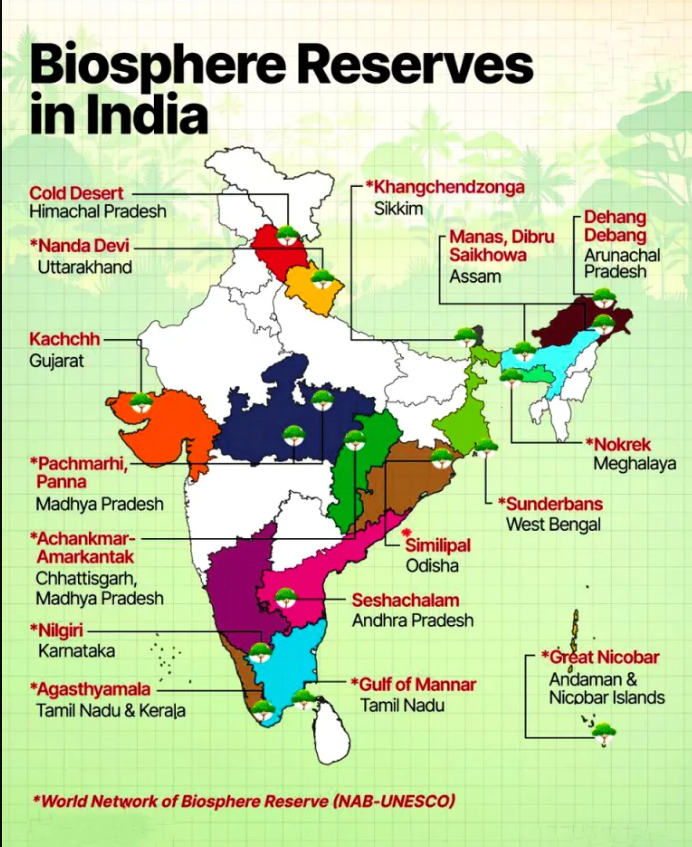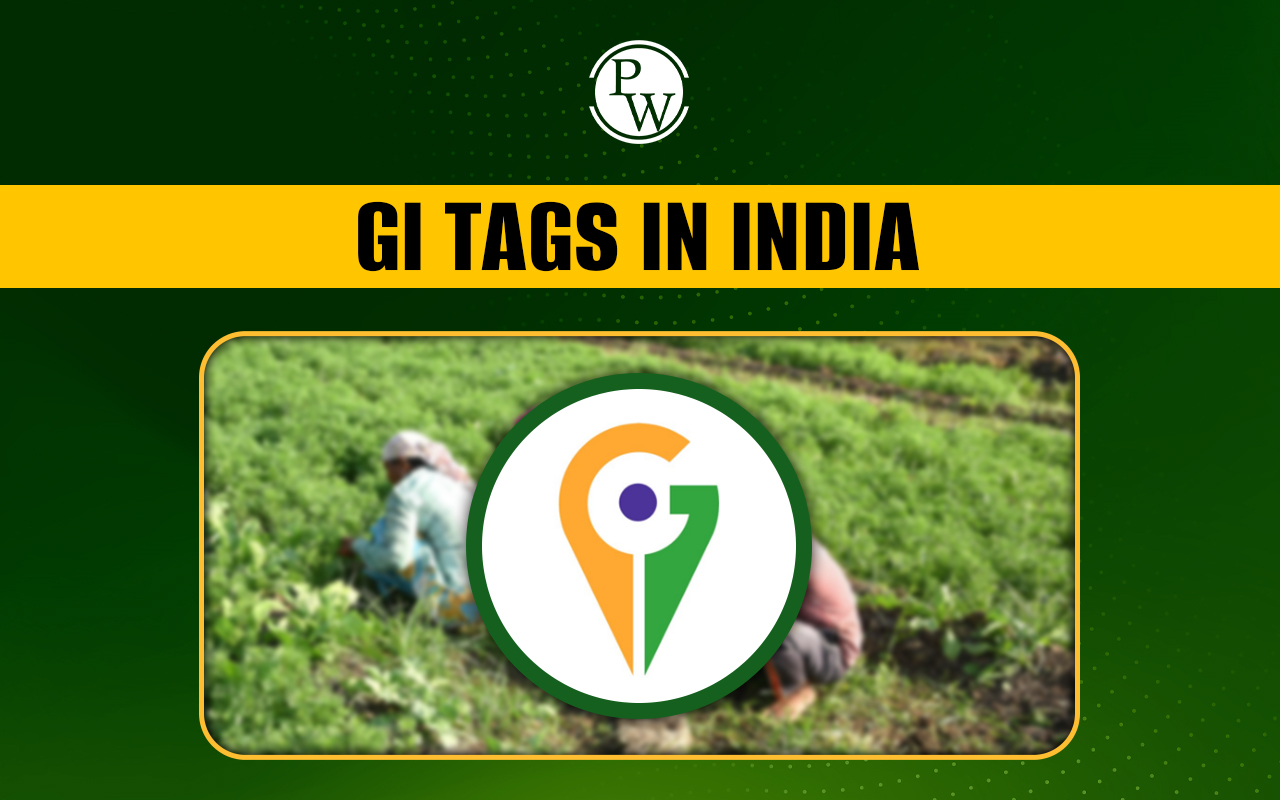
International Day for Biosphere Reserves 2024 will be celebrated on November 3 to promote the importance of biosphere reserves. Biosphere reserves are protected areas that represent a harmonious relationship between human communities and nature.
This year will mark the third anniversary of the International Biosphere Day that was established in 2021. The International Day for Biosphere Reserves 2024 is an opportunity to reflect on how to improve our relationship with the environment and adopt sustainable practices.International Day for Biosphere Reserves 2024 Overview
The International Day for Biosphere Reserves is observed on November 3 each year. This day was established by UNESCO General Conference in its 41st session to promote the role of biosphere reserves in conservation, sustainable development, and the well-being of communities living in and around these areas.| International Day for Biosphere Reserves 2024 Overview | |
| Aspect | Details |
| Event Name | International Day for Biosphere Reserves 2024 |
| Date | November 3, 2024 |
| Established In | 2021 |
| Established By | UNESCO General Conference |
| Resolution | 41 C/Resolution 37 |
| Purpose | To promote the role of biosphere reserves in conservation and sustainable development. |
| Theme for 2024 | To be announced |
| Global Count of Biosphere Reserves | 759 biosphere reserves in 136 countries |
| Biosphere Reserves in India | 18 notified biosphere reserves |
International Day for Biosphere Reserves 2024 Theme
International Day for Biosphere Reserves Theme 2024 is yet to be announced officially by UNESCO. The theme for the International Day for Biosphere Reserves 2024 is expected to focus on strengthening the relationship between people and the environment, emphasizing the importance of local action for global change.About Biosphere Reserves
According to UNESCO, Biosphere reserves are ‘learning places for sustainable development’. These are special areas where humans live in harmony with nature and include terrestrial, marine, and coastal ecosystems. Biosphere reserves are designated by UNESCO under the Man and the Biosphere (MAB) Programme. These reserves consist of core, buffer, and transition zones, each playing a different role in conservation and development:- Core Zone : The core area is a strictly protected region, often a national park or sanctuary, where human activities are restricted to ensure the protection of species and habitats.
- Buffer Zone: Surrounding the core zone, this area allows limited human activities that support conservation efforts, including research, education, and sustainable tourism.
- Transition Zone: The outermost area, where sustainable practices such as agriculture, tourism, and community settlements are encouraged to support both people and nature.
Importance of Biosphere Reserves
Biosphere reserves play a critical role in addressing the global environmental challenges we face today. They serve as "living laboratories," where different approaches to sustainable development can be tested and refined. Here’s why these reserves are so important:- Biodiversity Conservation: Biosphere reserves are home to a wide range of species, many of which are endangered. Protecting these areas helps preserve the planet's genetic diversity.
- Sustainable Development: These reserves demonstrate how economic development can be aligned with environmental conservation.
- Cultural Preservation: Many biosphere reserves are also home to indigenous communities whose traditional knowledge and practices contribute to the sustainable management of the environment.
Biosphere Reserves in World
As of 2024, there are 759 biosphere reserves in 136 countries . These reserves cover a wide range of ecosystems, from tropical rainforests and coastal areas to mountainous regions and Savannahs. Some of the most well-known biosphere reserves include:- Mura-Drava-Danube (MDD): The world's first 'five-country biosphere reserve.
- Island of Porto Santo Biosphere Reserve, Portugal: A unique biosphere reserve that focuses on sustainable tourism and the conservation of local biodiversity.
- Yellowstone National Park, USA: The first national park in the world.
- Doñana National Park, Spain: A critical wetland area that supports a variety of wildlife and migratory birds
- Amazon Rainforest, South America: The largest tropical rainforest in the world.
Biosphere Reserves in India
India is home to 18 notified biosphere reserves that cover diverse ecosystems, from tropical forests to coastal wetlands. The Nilgiri Biosphere Reserve, established in 1986, was India’s first biosphere reserve and spans across Tamil Nadu, Kerala, and Karnataka. Here is the complete list of biosphere reserves in India:| Biosphere Reserves in India | ||||
| S. No | Name | Year of Notification | Area (in km²) | Location (State) |
| 1 | Nilgiri | 1986 | 5520 (Core 1240 & Buffer 4280) | Tamil Nadu, Kerala, Karnataka (Wayanad, Nagarhole, Bandipur, Madumalai, Nilambur, Silent Valley, Siruvani hills) |
| 2 | Nanda Devi | 1988 | 5860.69 (Core 712.12, Buffer 5148.57, Transition 546.34) | Uttarakhand (Chamoli, Pithoragarh, Bageshwar) |
| 3 | Nokrek | 1988 | 820 (Core 47.48 & Buffer 227.92, Transition Zone 544.60) | Meghalaya (Garo Hills) |
| 4 | Great Nicobar | 1989 | 885 (Core 705 & Buffer 180) | Andaman and Nicobar Islands (Southernmost islands) |
| 5 | Gulf of Mannar | 1989 | 10,500 (Total Gulf area, Islands 5.55) | Tamil Nadu (Indian part of Gulf of Mannar) |
| 6 | Manas | 1989 | 2837 (Core 391 & Buffer 2446) | Assam (Kokrajhar, Bongaigaon, Barpeta, Nalbari, Kamprup, Darang) |
| 7 | Sunderbans | 1989 | 9630 (Core 1700 & Buffer 7900) | West Bengal (Delta of Ganges and Brahmaputra) |
| 8 | Simlipal | 1994 | 4374 (Core 845, Buffer 2129 & Transition 1400) | Odisha (Mayurbhanj district) |
| 9 | Dibru-Saikhowa | 1997 | 765 (Core 340 & Buffer 425) | Assam (Dibrugarh and Tinsukia Districts) |
| 10 | Dehang-Dibang | 1998 | 5111.50 (Core 4094.80 & Buffer 1016.70) | Arunachal Pradesh (Siang and Dibang Valley) |
| 11 | Pachmarhi | 1999 | 4926 | Madhya Pradesh (Betul, Hoshangabad, Chindwara) |
| 12 | Khangchendzonga | 2000 | 2619.92 (Core 1819.34 & Buffer 835.92) | Sikkim (Khangchendzonga hills) |
| 13 | Agasthyamalai | 2001 | 3500.36 | Tamil Nadu and Kerala (Thirunelveli, Kanyakumari, Thiruvanthapuram, Kollam, Pathanamthitta) |
| 14 | Achanakamar - Amarkantak | 2005 | 3835.51 (Core 551.55 & Buffer 3283.86) | Madhya Pradesh and Chhattisgarh (Anupur, Dindori, Bilaspur) |
| 15 | Kachchh | 2008 | 12,454 | Gujarat (Kachchh, Rajkot, Surendra Nagar, Patan) |
| 16 | Cold Desert | 2009 | 7770 | Himachal Pradesh (Pin Valley National Park, Chandratal, Sarchu, Kibber Wildlife Sanctuary) |
| 17 | Seshachalam Hills | 2010 | 4755.997 | Andhra Pradesh (Chittoor and Kadapa districts) |
| 18 | Panna | 2011 | 2998.98 | Madhya Pradesh (Panna and Chhattarpur districts) |
- Nilgiri (First)
- Gulf of Mannar
- Sunderban
- Nanda Devi
- Nokrek
- Pachmarhi
- Similipal
- Achanakmar - Amarkantak
- Great Nicobar
- Agasthyamala
- Khangchendzonga
- Panna, Madhya Pradesh

Man and Biosphere Programme
The Man and Biosphere (MAB) Programme was launched in 1971 by UNESCO to establish a scientific basis for improving the relationship between people and their environments. The program designates biosphere reserves globally and supports sustainable development while conserving biodiversity. The MAB Programme is central to creating a network of biosphere reserves worldwide, contributing to global conservation goals and the achievement of the Sustainable Development Goals (SDGs). The International Day for Biosphere Reserves 2024 reminds us of the urgent need to rethink our relationship with nature. As UPSC aspirants, understanding biosphere reserves is crucial for tackling questions related to environmental conservation, biodiversity, and sustainable development in Prelims and Mains. To further enhance your knowledge and preparation, explore PW UPSC Courses , designed to help you succeed in the competitive exam of civil services. Hurry up!| Related Articles | |
| International Day of Older Persons 2024 | Gandhi Jayanti 2024 |
| Lal Bahadur Shastri Jayanti 2024 | International Literacy Day |
| International Youth Day 2024 | World Food Day 2024 |
International Day for Biosphere Reserves 2024 FAQs
What is a biosphere reserve?
A biosphere reserve is a designated area recognized by UNESCO under the MAB Programme, aimed at conserving biodiversity while promoting sustainable development.
Which is the first biosphere reserve of the world?
The Waterton Biosphere Region designated in 1979, is recognized as the world's first biosphere reserve.
How many biosphere reserves are there in India?
India has 18 biosphere reserves, including the Nilgiri Biosphere Reserve, Sundarbans, and the Gulf of Mannar.
Which was the first biosphere of India?
The Nilgiri Biosphere Reserve, established in 1986, was the first biosphere reserve in India.
Why is the International Day for Biosphere Reserves important?
The International Day for Biosphere Reserves highlights the significance of these areas in promoting biodiversity conservation and sustainable development. It encourages reflection on improving our relationship with nature and adopting eco-friendly practices.
Talk to a counsellorHave doubts? Our support team will be happy to assist you!

Check out these Related Articles
Free Learning Resources
PW Books
Notes (Class 10-12)
PW Study Materials
Notes (Class 6-9)
Ncert Solutions
Govt Exams
Class 6th to 12th Online Courses
Govt Job Exams Courses
UPSC Coaching
Defence Exam Coaching
Gate Exam Coaching
Other Exams
Know about Physics Wallah
Physics Wallah is an Indian edtech platform that provides accessible & comprehensive learning experiences to students from Class 6th to postgraduate level. We also provide extensive NCERT solutions, sample paper, NEET, JEE Mains, BITSAT previous year papers & more such resources to students. Physics Wallah also caters to over 3.5 million registered students and over 78 lakh+ Youtube subscribers with 4.8 rating on its app.
We Stand Out because
We provide students with intensive courses with India’s qualified & experienced faculties & mentors. PW strives to make the learning experience comprehensive and accessible for students of all sections of society. We believe in empowering every single student who couldn't dream of a good career in engineering and medical field earlier.
Our Key Focus Areas
Physics Wallah's main focus is to make the learning experience as economical as possible for all students. With our affordable courses like Lakshya, Udaan and Arjuna and many others, we have been able to provide a platform for lakhs of aspirants. From providing Chemistry, Maths, Physics formula to giving e-books of eminent authors like RD Sharma, RS Aggarwal and Lakhmir Singh, PW focuses on every single student's need for preparation.
What Makes Us Different
Physics Wallah strives to develop a comprehensive pedagogical structure for students, where they get a state-of-the-art learning experience with study material and resources. Apart from catering students preparing for JEE Mains and NEET, PW also provides study material for each state board like Uttar Pradesh, Bihar, and others
Copyright © 2025 Physicswallah Limited All rights reserved.











